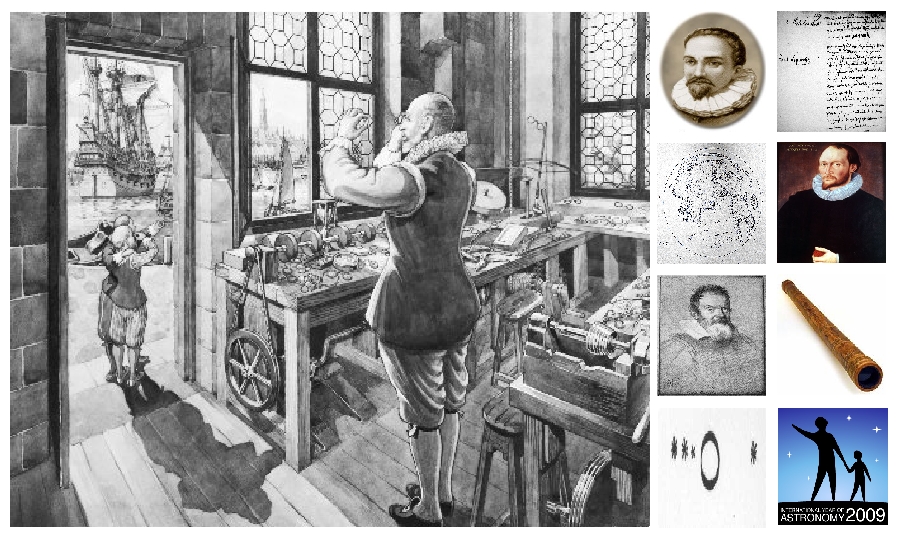Daily Image
30-09-2008400 years of the telescope
| Submitter: | Michael Garrett |
| Description: | Exactly 400 years ago today, Hans Lipperhey left his home town of Middleburg in Zeeland, and made his way to the Hague. His aim was to lodge a patent application at the States Generale. Lipperhey's patent was no ordinary one - it presented the first recorded description of the telescope, and on the 2nd of October Hans' application was discussed by the authorities. Partly due to the obvious military and commercial potential of this amazing new device, but also because of claims and counter-claims from several other Dutch spectacle makers, the patent was never granted. We will probably never know who was the first inventor of the telescope, but there is little doubt it was certainly a Dutch invention, even if we can't quite agree who should get the credit! In fact, legend has it, that the discovery of the telescope was accidentally made by Hans' children, while playing with lenses in the spectacle maker's workshop. The question of who first turned the telescope skywards to the stars and planets is also a point of some debate. A few months after Lipperhey's original patent application, telescopes began to appear in England and Italy. These early telescopes provided a magnification of ~ 30, but the central field of view was very small - about 1/4 of the extent of the full-moon at the very best. It is known that Thomas Harriot in England was making the first maps of the moon and sunspots in late July 1609 (see image). Harriot was not very keen on publishing his results, so his contribution is largely unknown - a lesson to us all. Indeed, Harriot's observations were not revealed until his papers and drawlings were found 210 years later! Galileo first turned his improved telescope skywards around November/December 1609, but not before astonishing the Venetian senate by revealing to them, ships well out on the lagoon, long before they became visible from the docks. In addition to having an eye for a commercial opportunity, it was Galileo that really understood the significance of the first (astronomical) telescope results - he recorded planets appearing as resolvable disks, moons revolving around Jupiter, and the phases of Venus. It must have been an amazing feeling for him. For Galileo these observations provided crucial evidence for his fundamental belief in the Copernican system i.e.that the earth and planets revolve around the Sun. Beliefs that were to bring him into sharp conflict with the Church a few decades later. In recognition of the telescopes invention, the United Nations has proclaimed the year 2009 as the International Year of Astronomy. See http://www.astronomy2009.org/ for more details. |
| Copyright: | ASTRON |
| Tweet |  |
